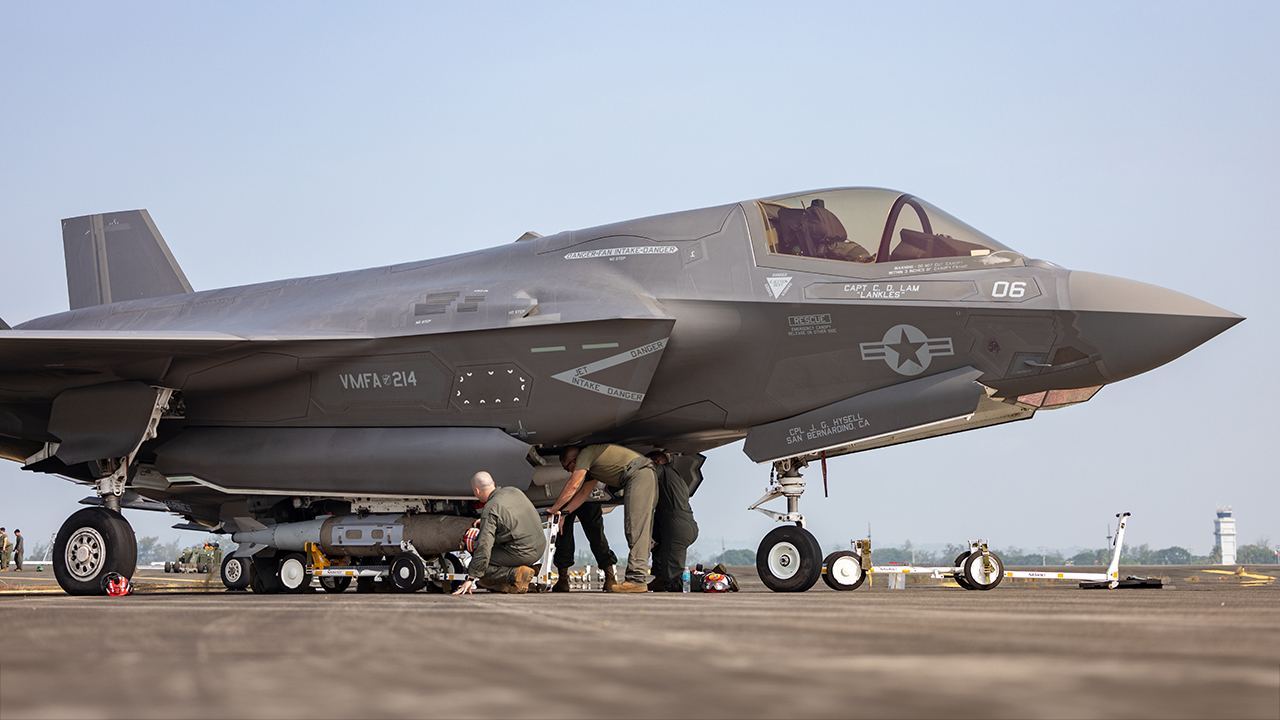US Marines F-35B jets attack floating targets with GBU-32 JDAMs during exercises with the Philippine military


Philippine unmanned aerial reconnaissance weapons provided important visual information that was relayed to Philippine artillery and U.S. F-35B fighter jets to attack the floating targets.
The United States and the Philippines held firing exercises in the South China Sea last week amid growing friction between Beijing and the Philippines over conflicting maritime claims.
The exercise between the US and the Philippines was described as the “first of its kind”. It involved US Marine Corps F-35B Lightning II jets dropping bombs on “floating targets”, USNI NewsOfficial press releases mention that these exercises took place between June 15 and 21, with four F-35Bs dropping seven GBU-32 JDAM (Joint Direct Attack Munition) bombs on floating targets off the coast of Western Luzon.
The latest reports mention that the People’s Liberation Army Navy also conducted firing exercises with small amphibious ships on June 19, 2024. The Chinese exercise appears to be an extension of the exercises that Global times already reported on March 17, 2024, which were smaller amphibious “tank landing ships” and also included an element with live ammunition.
F-35Bs bomb floating targets
The USMC announced on June 24 that MASA (Marine Aviation Support Activity) with a LLFX (Littoral Live-Fire Exercise) component was held on June 15. The activity “tested the joint U.S. and Philippine ability to synchronize multiple air and ground units to conduct controlled attacks in Philippine territorial waters, simulating a coastal defense scenario against an adversary.”
In total, three 105mm howitzers from the 4th Marine Brigade of the Philippine Marine Corps and four F-35B Lightning II aircraft from the U.S. Marine Corps with VMFA 214 fired live ammunition at targets built by local Philippine contractors “to simulate ships” during the event.
Using information from Philippine Navy and Air Force drones, Philippine and U.S. soldiers relayed commands to a C-130 circling near the training area, which housed the air command. This element then relayed the necessary targeting information to the four F-35Bs of Marine Fighter Attack Squadron (VMFA) 214 “Black Sheep.”

Once the F-35Bs found their targets, that information was relayed to the joint command center. The F-35Bs hit their targets with precision, landing all seven GBU-32 bombs on the maritime targets located three nautical miles off the coast of Zambales, according to the USMC.
Four F-35Bs from VMFA-214 “Black Sheep” arrived in the Philippines for a maritime assault exercise off Western Luzon as part of Marine Aviation Support Activity 2024. The focus of the exercise was to improve 🇵🇭🇺🇸 command and control capabilities in a territorial defense scenario. pic.twitter.com/hDxdWC1AmX
— Aaron-Matthew Lariosa (@Aaron_MatthewIL) June 15, 2024
“MASA is fundamentally designed to improve capabilities, develop interoperability and enhance cooperation in the utilization of aviation assets in support of Marine air-ground operations,” said Brigadier General Robert Brodie in the USMC press release. These exercises are part of the even larger maneuvers that covered air, sea and land areas from the islands of Palawan to Batan with elements of the I and III MEF (Marine Expeditionary Forces).
The Commandant of the Philippine Marine Corps, Brigadier General Romea T. Racadio, was also quoted as saying: “MASA is a great opportunity for us to use our air power to provide mobility and reconnaissance and to penetrate into areas that we normally cannot see.”
Chinese drills
The SCMP (South China Morning Post)quoted Video surveillancesaid that “the naval task force consisting of landing ships Danxiashan, Laotieshan and Lushan conducted an all-weather combat exercise in the SCS over four days.” The exercises were conducted “recently,” but it was not specified when they took place.
While the fleet also conducted “air defense drills” that involved firing “multiple shots” at “enemy drones,” the goal was to “test the Chinese Navy’s emergency response and coordinated combat capabilities.” This suggests a combined arms exercise involving naval aviation elements and naval vessels, and possibly also unmanned and manned reconnaissance assets from the People’s Liberation Army Air Force and Navy.

Further reports said Danxiashan, Laotieshan and Lushan “conducted a four-day combat exercise at an undisclosed location in the South China Sea.” “The drills focused on search and rescue, live fire, damage control, ship-to-ship anchoring, smoke screens and anti-drone air defense operations – a modern addition reflecting the recent development of unmanned aviation.”
While the Danxiashan appears in all reports, Global times identifies the other landing ships as Daiyunshan and Wanyangshan. Video surveillance but only mentions Danxiashan. Video surveillanceFootage from last week showed crews aboard the Danxiashan firing large-caliber anti-aircraft guns at what appeared to be target drones. Officer Zhang Jianbin was quoted as saying it was “difficult to fire at the target as there is little reaction time,” forcing crews to “constantly adjust firing angles.”
The “all-weather, multi-theater combat exercise” focused on “defensive drone drills that require dislodging enemy drones from barrages and quickly changing firing positions under the cover of fog.” The goal was to improve crew skills through “continuous and uninterrupted training at sea.”
The smaller, older-generation landing ships deploy small numbers of troops or armored vehicles directly onto the beach. Danxiashan is a Type 072 tank landing ship, a Cold War-era design that can carry up to 10 tanks. They could be used for direct amphibious landings on reefs, atolls and other contested areas of the Spratly Islands, giving China the ability to quickly take over unprotected areas in Philippine waters.
Global times also said that between the larger Type 071 and Type 075 amphibious assault ships or LHDs (Landing Helicopter Docks), “the smaller Type 072 tank landing ships take advantage of their large numbers and greater flexibility.”
“Unlike its larger successors, which remotely drop landing troops from the shore, the Type 072 unloads vehicles, troops and cargo directly on land.” The Type 072 is considered “particularly useful” for enforcing China’s “maritime rights over islands and reefs in the South China Sea.”



